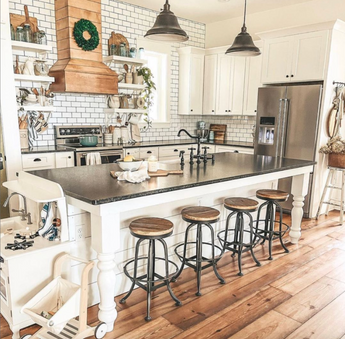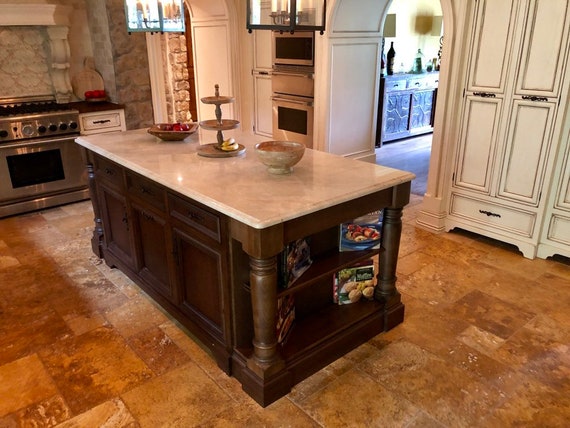The Most Effective Kitchen Island Leg Options for Modern and Conventional Kitchens
The Most Effective Kitchen Island Leg Options for Modern and Conventional Kitchens
Blog Article
The Value of a Sturdy Kitchen Island Leg in Creating a Functional Cooking Location
A strong kitchen island leg functions as a basic part in developing a practical food preparation setting, supplying necessary assistance for both the counter top and numerous kitchen activities. The stability it uses can considerably reduce the threat of crashes in high-traffic locations, while also adding to the general visual coherence of the area. As kitchen areas evolve into multifunctional locations for cooking, eating, and mingling, the selection of materials and design considerations for island legs ends up being significantly crucial. Recognizing these aspects can transform your cooking area right into a more secure and extra efficient location, motivating further exploration into the best alternatives readily available.
Advantages of Sturdy Island Legs
Giving necessary assistance, sturdy kitchen island legs play a crucial function in boosting the performance and durability of cooking area islands - kitchen island leg. These legs not only birth the weight of the kitchen counter and any type of added products positioned on the island, but also add to the general security of the framework. A well-supported kitchen island guarantees that it continues to be upright and functional, even under heavy use, which is particularly crucial in hectic cooking area settings
Furthermore, tough island legs can improve the aesthetic allure of the kitchen. They offer a strong structure that can match numerous layout styles, from modern-day to standard. This convenience enables home owners to personalize their kitchen islands according to individual taste while making sure that the structural honesty stays uncompromised.
In addition to their helpful duty, durable cooking area island legs can also improve safety. Eventually, investing in tough kitchen area island legs is crucial for a useful and aesthetically pleasing cooking area.
Products for Cooking Area Island Legs
When picking products for kitchen area island legs, longevity and visual appeal are vital elements to take into consideration,. The most common materials consist of hardwood, steel, and engineered timber, each offering one-of-a-kind benefits.
Wood, such as cherry, maple, or oak, is a classic option because of its stamina and classic beauty (kitchen island leg). It can withstand significant weight and is resistant to put on, making it perfect for high-use cooking area settings. In addition, wood can be stained or painted to enhance different kitchen area designs
Metal legs, typically crafted from stainless-steel or functioned iron, supply a modern and commercial appearance. They are incredibly solid and can sustain significant tons while being resistant to wetness and warm, which is beneficial in a cooking location. Steel legs can also be easily cleansed, improving their functionality.

Style Factors To Consider for Stability
The selection of materials for kitchen island legs directly affects the style considerations for security. When designing a cooking area island, it is extremely important to examine the weight-bearing capability of the picked materials. Larger products, such as solid wood or metal, commonly provide higher stability, especially under the anxiety of everyday use.
In addition, the leg design should integrate correct geometry to enhance security. A larger base enhances the assistance location, lessening the threat of tipping or tottering. Consideration should likewise be offered to the height of the legs; out of proportion leg lengths can bring about discrepancy, jeopardizing the total stability of the island.
In addition, the circulation of weight throughout the island you could look here is vital. Making certain that the leg positioning aligns with the heaviest components, such as countertops and devices, will certainly further improve stability.
Upkeep Tips for Durability

Depending on the material of the legs-- whether timber, metal, or composite-- appropriate cleaning methods must be utilized. Steel legs may call for a light gloss to prevent rust and keep their gloss.
Furthermore, tightening screws and screws regularly can make certain stability and avoid tottering. Consider enhancing the legs with additional braces or sustains to improve resilience if the kitchen area island experiences heavy use. Applying a safety coating or sealant can secure against moisture and stains, prolonging the life-span of the legs. By following useful site these upkeep tips, home owners can ensure their cooking area island legs remain useful and robust for several years to come.
Picking the Right Leg Style
Regular upkeep ensures that kitchen island legs stay useful and strong, yet choosing the best leg style is similarly crucial for both aesthetic appeals and assistance. The option of leg design can substantially affect the total design and harmony of your kitchen area.

Performance is one more important element. For instance, thicker legs or those with a strong base can sustain heavier counter tops and equipment, boosting the island's utility. On the other hand, slender legs may create a ventilated look, suitable for lighter designs however possibly less helpful.
Verdict
In summary, the relevance of sturdy cooking area island legs can not be overstated in the creation of a functional cooking location. These legs supply necessary assistance, enhance security, and add to the general visual of the cooking area. By meticulously selecting ideal materials and designs, as well as executing proper maintenance methods, the long life and efficiency of kitchen islands can be made certain. Inevitably, buying durable island legs is basic to accomplishing a effective and secure culinary environment.
A tough kitchen island leg serves as an essential part in establishing a useful food preparation atmosphere, offering required support for both the kitchen counter and different kitchen area activities.Supplying crucial assistance, tough kitchen area island legs play a pivotal role in improving the capability and resilience of kitchen islands. Eventually, spending in sturdy cooking area island legs is important for a practical and visually pleasing cooking area.
Consideration should additionally be given to the height of the legs; disproportionate leg sizes can lead link to inequality, compromising the total stability of the island.
Wooden legs give warmth and a timeless appearance, while steel legs supply a contemporary and industrial feel.
Report this page